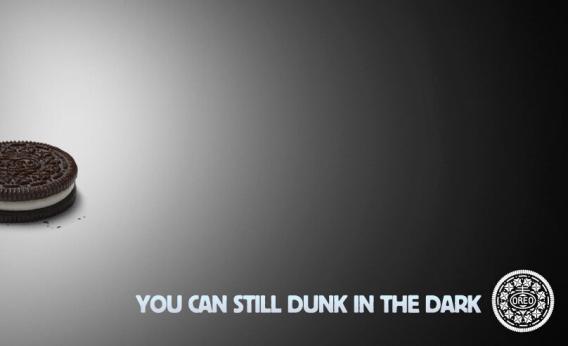BLOG/Digital Marketing
Oreo's Superbowl Blackout Victory
 This last Sunday, Oreo became more than just a cookie company – they became pioneers in digital marketing. During the Super Bowl, when the power went out in the Superdome, Oreo jumped on the chance to be a part of the nation’s conversation, and created the first important real time Super Bowl ad. Realizing the potential of this national event, Oreo quickly gathered their marketing team, created an ad, posted it on twitter and watched as the ad was shared like grilled cheese sandwich at a Phish show. You don’t need to hop in a phone booth with Bill and Ted to see this is the future of marketing. When people begin to discuss transitional moments from traditional to new media in marketing, this will be an example that is used. There are three reasons why Oreo’s new media ad changed the face of marketing:
This last Sunday, Oreo became more than just a cookie company – they became pioneers in digital marketing. During the Super Bowl, when the power went out in the Superdome, Oreo jumped on the chance to be a part of the nation’s conversation, and created the first important real time Super Bowl ad. Realizing the potential of this national event, Oreo quickly gathered their marketing team, created an ad, posted it on twitter and watched as the ad was shared like grilled cheese sandwich at a Phish show. You don’t need to hop in a phone booth with Bill and Ted to see this is the future of marketing. When people begin to discuss transitional moments from traditional to new media in marketing, this will be an example that is used. There are three reasons why Oreo’s new media ad changed the face of marketing:
- Oreo’s ad was timely – Traditional media ads suffer from the fact that the ads must be produced, airtime has to be purchased ahead of time, and the ads can’t be responsive to real life events. Traditional media ads can be close to known events, for example many of the ads during the Super Bowl were about the Super Bowl (including the great Samsung ad). However, when an unplanned event happens there is no way a TV ad could be whipped up in time. However, new media outlets allowed Oreo’s own Navy Seal team of marketers to respond to this real time event. New media bypasses the most restrictive aspect of traditional media – buying airtime ahead of time. In new media a company can post whenever they like rather than having their ad occur at set times.
- Oreo was part of the conversation – Ads traditionally try to create their own conversation rather than participate in organic conversations. I have never had an organic conversation where I sat around wondering how Men’s Warehouse founder George Zimmerman, thought I would look in a suit. New media allowed Oreo to join the organic conversation about the power outage. Viewers of the Super Bowl were already discussing the power outage and that meant that there was a built in audience who were already interested in what Oreo was saying.
- Oreo produced an ad that went viral - Oreo received 15,000 retweets on this ad alone. Each retweet is an endorsement for the ad, as well as the product. The scale of this type of viral word-of-mouth advertising is almost impossible to achieve, without new media advertising. Ads posted to new media are easy to share by design. These networks are made to be social and Oreo was able to take advantage of that.
More from the
DO Blog

Designing & Building Product Finder Quizzes for eCommer...
Strategy & Planning / December 23, 2020
View Blog Post
3 Customer Motivation Strategies to Improve Your eCommerce i...
Strategy & Planning / July 27, 2020
View Blog Post
